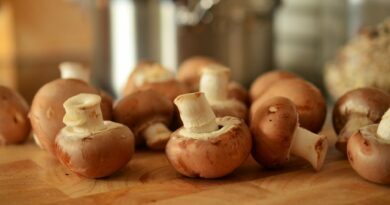How to Grow Bell Peppers on Your Allotment
Growing bell peppers on an allotment can be a rewarding experience, not only for the delicious and healthy vegetables you will get, but also for the satisfaction of growing your own food. In this guide, we will go through the steps needed to grow bell peppers, the health benefits of eating them, and some meal ideas that you can make with your homegrown produce.
Growing Bell Peppers:
- Choose a good spot: Bell peppers need full sun and well-drained soil to grow well. Choose a spot in your allotment that gets at least 6-8 hours of direct sunlight each day, and where the soil is rich, loose, and drains well.
- Prepare the soil: Before planting your bell peppers, prepare the soil by adding compost or well-rotted manure to improve soil fertility and structure. You can also add some organic fertilizer, such as fish meal or bone meal, to provide extra nutrients for the plants.
- Planting: Bell peppers can be started from seed or transplants. If you want to start from seed, sow them indoors about 8-10 weeks before your last expected frost date. When the seedlings are about 4-6 inches tall, transplant them to your allotment. If you prefer to use transplants, wait until the weather warms up, and plant them directly into the soil.
- Care: Water your bell peppers regularly, making sure the soil stays moist but not waterlogged. Mulch around the plants to retain moisture and prevent weeds from growing. Fertilize the plants once a month with an organic fertilizer. As the plants grow, support them with stakes or cages to prevent them from falling over.
- Harvest: Bell peppers can be harvested when they are fully ripe and have reached their mature color, usually about 70-90 days after planting. Cut the peppers from the plant with a sharp knife or scissors, leaving a short stem attached. The more you harvest the peppers, the more they will produce.
Health Benefits of Bell Peppers:
Bell peppers are not only delicious, but also highly nutritious. They are low in calories and fat, but high in fiber, vitamins, and minerals. Here are some of the health benefits of eating bell peppers:
- Rich in Vitamin C: Bell peppers are a great source of vitamin C, which helps boost the immune system, protect against colds and flu, and promote healthy skin.
- Antioxidant Properties: Bell peppers contain antioxidants that help protect the body from damage caused by free radicals, which can contribute to the development of chronic diseases.
- Eye Health: Bell peppers are a rich source of vitamin A, which is important for eye health and vision.
- Digestive Health: The fiber in bell peppers helps promote digestive health and can aid in weight management.

Meal Ideas:
Once you have harvested your homegrown bell peppers, there are many delicious meal ideas you can make with them. Here are some recipes to try:
- Stuffed Bell Peppers: Cut off the top of the peppers and remove the seeds and membranes. Stuff the peppers with a mixture of cooked rice, ground beef, onions, and tomato sauce. Bake in the oven until the peppers are tender and the filling is heated through.
- Bell Pepper and Tomato Salad: Slice the bell peppers and tomatoes into thin strips. Toss with olive oil, lemon juice, salt, and pepper. Serve as a refreshing side dish.
- Bell Pepper and Chicken Stir Fry: Cut the bell peppers and chicken into thin strips. Stir fry with garlic, ginger, soy sauce, and sesame oil. Serve over rice for a quick and healthy meal.
Growing bell peppers on your allotment not only provides you with delicious and healthy vegetables, but it also offers numerous benefits such as the satisfaction of growing your own food and the opportunity to connect with nature. Following the steps outlined in this guide, you can successfully grow bell peppers in your allotment and reap the rewards of your hard work. Growing bell peppers on your allotment can be a fulfilling and enjoyable experience. With a little care and patience, you can enjoy the fruits of your labor and reap the benefits of this healthy and nutritious vegetable.




